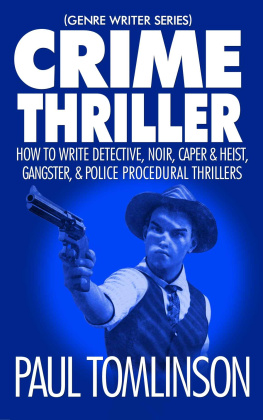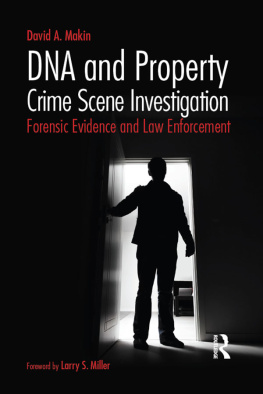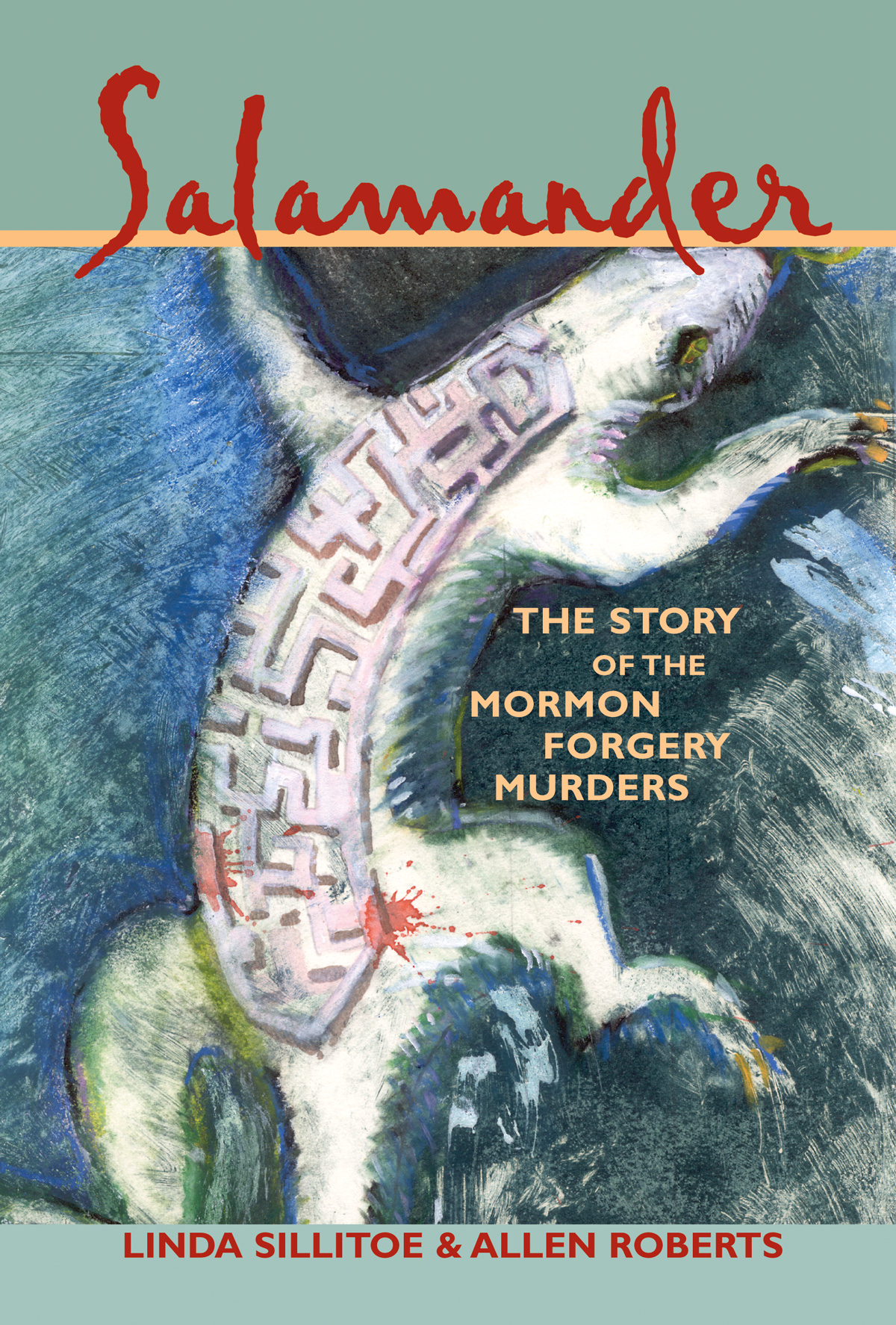SALAMANDER
The Story of the
Mormon Forgery Murders
Second Edition with a New Afterword
Linda Sillitoe and Allen Roberts
forensic analysis by
George J. Throckmorton
Signature Books
Salt Lake City
2006
FOR THE SURVIVORS,
ESPECIALLY THE FAMILIES OF
Steven F. Christensen,
Kathleen W. Sheets, and
Mark W. Hofmann
Copyright 2006, Signature Books, Inc. All rights reserved. Signature Books is a recognized trademark of Signature Books, Inc.
First edition 1988.
Book and cover design by Traci OVery Covey
Library of Congress Cataloging-in-Publication Data
Sillitoe, Linda, 1948-2010.
Salamander.
Cloth bound ISBN 0-941214-65-6
Mass Market ISBN 0-941214-87-7
Trade Paper ISBN 1-56085-200-3
Includes bibliographical references
I. Hofmann, Mark. 2. Church of Jesus Christ of Latter-Day SaintsHistory. 3. CriminalsUtahSalt Lake CityBiography. 4. MurderUtahSalt Lake City- Case studies. 6. Mormon ChurchCase studiesHistory.
I. Roberts, Allen D., 1947-.II.Title.
[HV6248.H467S55 1989]364.l5230979225
Contents
Preface
By February 1986, when Mark W. Hofmann was charged with two bombing murders, document forgery, and fraud, the research for this book was well underway. While we initially reserved judgment on Hofmanns guilt or innocence, four months of investigating the story convinced us that the secrets, targets, and motives in this mystery lay in a Mormon subculturean unstructured, diverse community of about 3,000 academics, historians, writers, artists, researchers, and readers. It was a community both of us knew well.
Fortunately, for this project, the vast majority of that community is highly literate. Because of their educational background, religious instruction, and interest in the flow of information, many kept journals, daily appointment books, and even recorded their conversations and participation in events surrounding contemporary Mormon history, document discoveries, and church politics. The information made available to us included excerpts from the diary and daytimer entries of high church officials, rare book and document dealers, financial victims, historians, and Mormon critics. Letters and journal entries written by the murder victims and the perpetrator also proved helpful, as they became available through family members or investigators. We also depended upon written accounts of complicated document or business transactions provided to us by those involved.
Within the voluminous evidence collected by investigators, we found much that proved invaluable, particularly when the case did not go to trial. Our own research uncovered several interesting pieces of evidence, including a plan for another murder.
The bombings were investigated by the Salt Lake City Police Department, the Salt Lake County Attorneys Office, the Federal Bureau of Investigation, The Federal Bureau of Alcohol, Tobacco, and Firearms, the United States Attorney Generals Office and its grand jury, and LDS Church Security. Following a preliminary hearing, thirty felony counts against Mark Hofmann were bound over for trial in Third District Court. Since the investigative reports and evidence gravitated to the Salt Lake Police Department and the county attorneys office, we spent many hours interviewing and reinterviewing key investigators and prosecutors, comparing theories, and tracing the investigation itself. Our presence during the lengthy preliminary hearing provided us not only with the dramaand tedium of the courtroom, but with the best accounts of forty-one witnesses. Some testimony required follow-up interviews, as well; nevertheless, the extensive public record established in court offered a reliable framework for making sense of an immense amount of information.
Only through portraying a few key investigators were we able to avoid the use of composite characters to represent the scores of officers involved. Similarly, we are forced to minimize or omit mention of many people whose individual experiences are part of the larger story-witnesses, reporters, collectors and dealers, investors, and family members and friends of the murder victims. Even then, dozens of names and details were removed from the text by our editors. This was done neither because the individuals or their accounts were unimportant, nor to protect sources, but to simplify for the reader a story that involved hundreds of people in complex situations. In only two instances did we agree to use pseudonymsKate Reid and Gene Taylordue to issues of privacy and because their real names were unessential to either the story or the public record.
Throughout this process, information was both a goal and a distraction. A continually updated chronology of dates, times, and events eventually covered thirty years and represented, in itself, 145 pages. Keeping this timeline brought together seemingly unrelated incidents in new ways and became the backbone of the book.
The story was fleshed out by hundreds of additional interviews ranging from brief telephone calls to all-day sessions. Information we found vital during our first year coalesced during the second year, providing a steady base for more central and focussed interviews and investigation. We learned very early the necessity of segregating information that originated with Mark Hofmann. Although his interviews with the prosecutors became available about twenty months into our research, we did not rely on them for our basic storyline, but rather upon verifiable and independent accounts. Hofmanns early interviews, writings, and depositions are represented here but are clearly identified.
In order to recount a coherent story, we have woven into narrative form the information and insight from all these sources. Naturally, we do not claim that the conversations, which occurred over a period of years, are reported verbatim. Rather, we have relied on our sources memories and, where possible, on other documentation. Regarding contested or especially significant incidents, we have compared accounts, paying attention to specificity, detail, bias, consistency with the whole, and point of view. Despite those precautions, we recognize that individual viewpoint and memory are such that these renderings cannot possibly seem entirely accurate to all involved. However, we have made a sincere attempt to tell the story as accurately, fairly, and sensitively as our own limitations permit. The synthesis of information this book represents is ours alone, and we accept responsibility for inadvertent errors.
Readers unfamiliar with Mormon terms need only understand the basic organizational structure of the Church of Jesus Christ of Latterday Saints, which forms a pyramid with a wide base and a narrow top. At the pinnacle is the church president/prophet and his two counselors. These three men form the First Presidency of the church and, along with the Council of Twelve Apostles, are sustained by Mormons as prophets, seers, and revelators, who devote their lives to the church. Other general authorities, the First Quorum of Seventy and Presiding Bishopric, form the tier below and fill full-time ecclesiastical callings. These leaders are assisted by the descending ranks of male priesthood holders; virtually every active Mormon adult holds at least one lay church position, supervised by the priesthood. Presiding over the bottom of the pyramid are bishops, the equivalent of ministers, priests, or rabbis, except that Mormon bishops hold a lay calling that rotates about every five years. Each bishop leads a ward (parish or congregation), and six or so wards are grouped into a stake (or diocese), led by a stake president.










